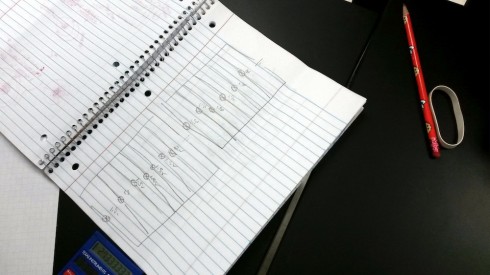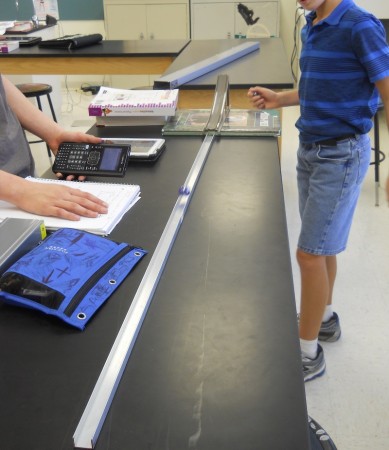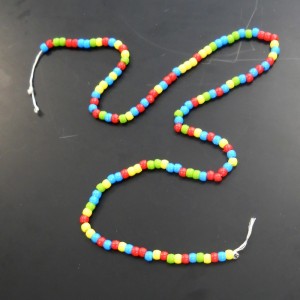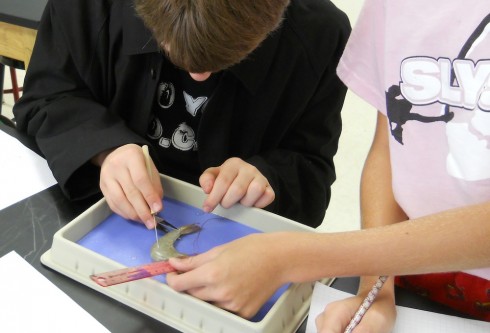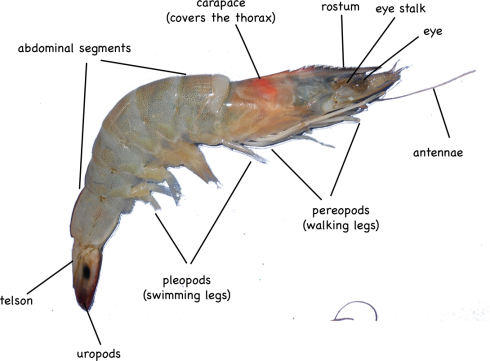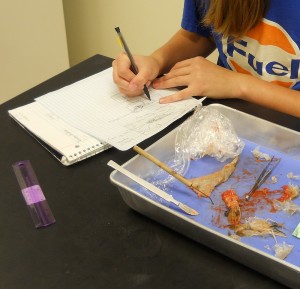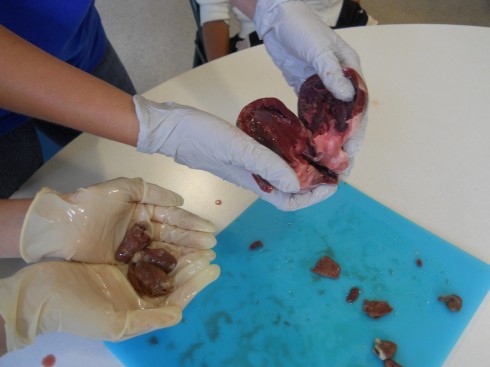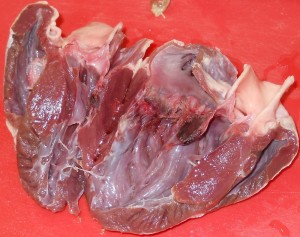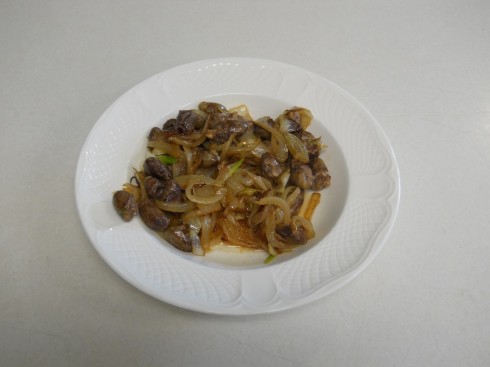
Last week, my middle schoolers did a set of experiments on electricity and magnetism. They answered the questions:
- How does the voltage across each light bulb change as you add more and more bulbs to a parallel circuit?
- How does the voltage across each light bulb change as you add more and more bulbs to a series circuit?
- How does the number of coils of wire wrapped around a nail affect it’s magnetism (as measured by the number of paperclips it can pick up)?
- How does the amount of salt mixed into water affect its conductivity?
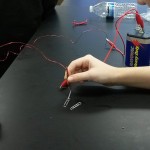

Each question is designed so that students have something to measure and will be able to use those measurements to make predictions. For example, once they’ve measured the voltage across four bulbs in series, they should be able to predict the voltage across the bulbs in a series of ten.
Some of the experiments, like the nail electromagnet, should have simple linear trends, with students choosing the advanced option having to find an equation to fit their data for the predictions. And I’ll challenge the students in Algebra II to find the equations for the inverse relationships–I’ve already asked their math teacher (Mr. Schmidt) to help them out if they need it.
This has also provided the opportunity for them to apply what they’ve just learned about drawing circuit diagrams (we use this set of symbols).
